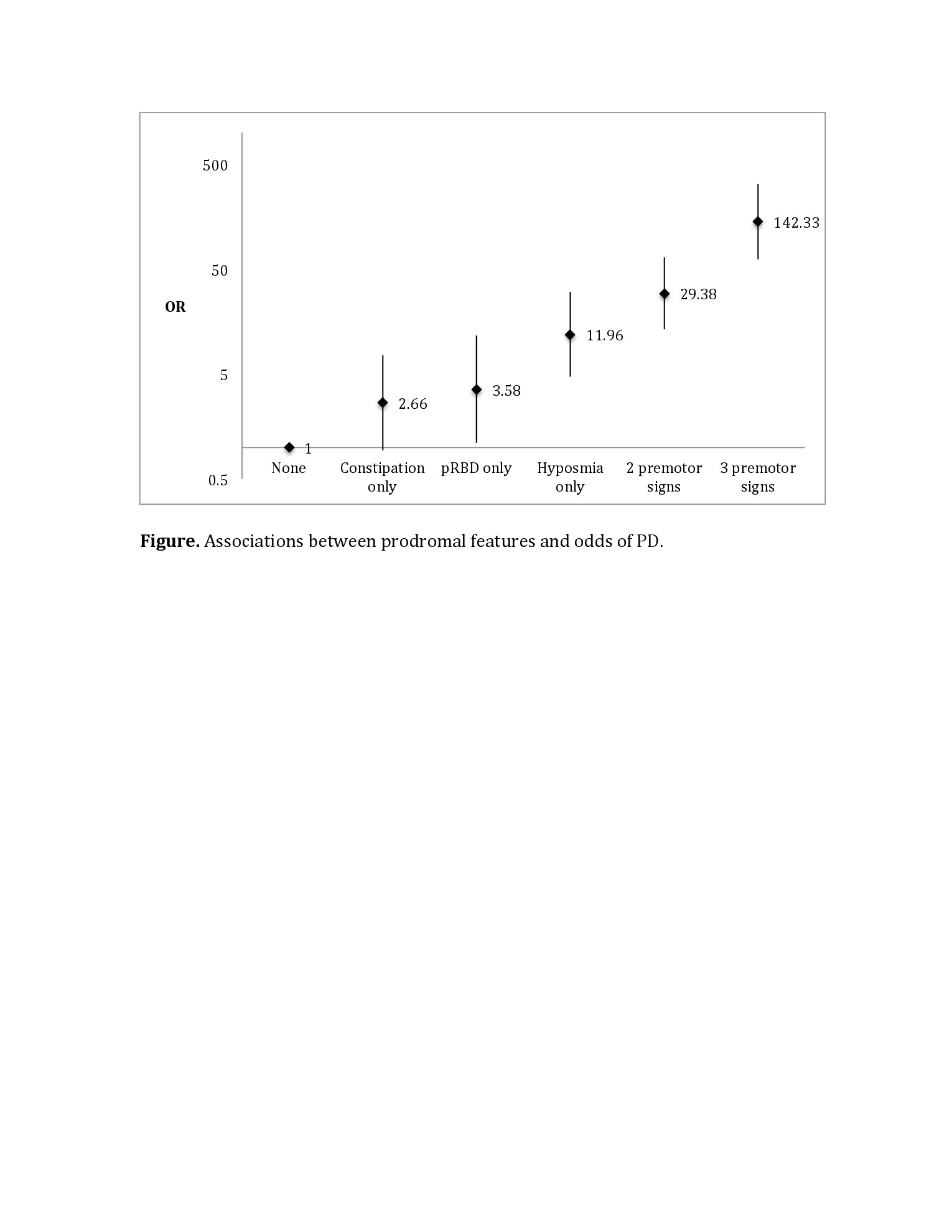Session Information
Date: Monday, June 5, 2017
Session Title: Epidemiology
Session Time: 1:45pm-3:15pm
Location: Exhibit Hall C
Objective: To estimate the relative risk of PD according to combinations of prodromal features.
Background: Clinical PD is preceded by a prodromal period characterized by non-motor symptoms, including REM sleep behavior disorder (RBD), hyposmia, and constipation. Identifying individuals during this period offers the possibility of recognizing individuals who might benefit from the study of potential neuroprotective therapies.
Methods: We initiated a longitudinal investigation (HPRO-PD) of prodromal PD among participants in the Health Professionals Follow-up Study, a cohort of >50,000 men recruited in 1986 who are being actively followed via biennial questionnaires for several health related conditions, including incident PD. This investigation is restricted to the 18,199 men who responded to the 2012 questionnaire, which included questions regarding constipation and probable RBD (pRBD). Individuals who screened positive for either constipation or pRBD (n=5519) or had a confirmed PD diagnosis (n=76), and a random sample of 2857 men with neither constipation nor pRBD, were sent in 2014-5 the Brief Smell Identification Test to assess olfaction. An additional 55 PD cases and 190 age-matched controls were recruited as part of a pilot nested case-control study conducted in 2012. Because the procedures and instruments for the case-control study were essentially identical to those employed for the full cohort, results from both studies were pooled and included in this report. Age-adjusted odds ratios (ORs) of PD were estimated using logistic regression, and inverse probability weighting was used to account for the fact that only a sample of individuals without pRBD or constipation were recruited.
Results: The associations between prodromal features and PD risk are presented in the Figure. The three prodromal features combined were present in 30% of the cases and 1% of the controls, yielding a pooled OR of 142 (95% CI: 62.5-324; p<0.0001) for risk of PD, relative to those without any of these features.
Conclusions: While constipation, pRBD and hyposmia are common when considered individually, their co-occurrence is rare in individuals without PD. The odds of PD increased exponentially with the number of prodromal features. Assessment of constipation and pRBD, followed by an olfactory test, can thus provide an efficient way to identify men with prodromal PD.
To cite this abstract in AMA style:
K. Hughes, X. Gao, J. Baker, M. Schwarzschild, A. Ascherio. Associations of probable REM sleep behavior disorder, constipation, and hyposmia with PD [abstract]. Mov Disord. 2017; 32 (suppl 2). https://www.mdsabstracts.org/abstract/associations-of-probable-rem-sleep-behavior-disorder-constipation-and-hyposmia-with-pd/. Accessed December 31, 2025.« Back to 2017 International Congress
MDS Abstracts - https://www.mdsabstracts.org/abstract/associations-of-probable-rem-sleep-behavior-disorder-constipation-and-hyposmia-with-pd/

